Pit Fired and Functional Work Methods
Where did it come from?
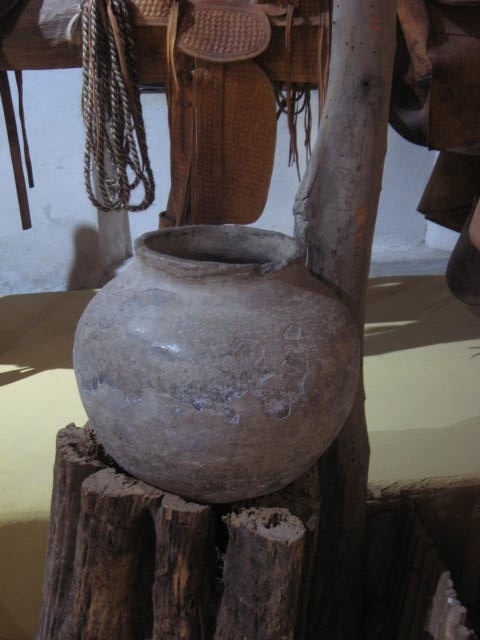
Burnished, slip covered and pit fired pottery traces its lineage to many ancient civilizations. From Asia, Europe and the Americas, beautiful sculptures and pots were created, and decorated to summon the gods, carry food, store precious liquids and materials. The advent of functional glazed ware in our industrialized world won over venerable methods used to produce this work. Hence their creation and use declined. Artists are rediscovering the beauty and aesthetic of burnished, pit fired work and reintroducing it anew.
Creating coiled work and preparation for a pit/barrel or saggar firing

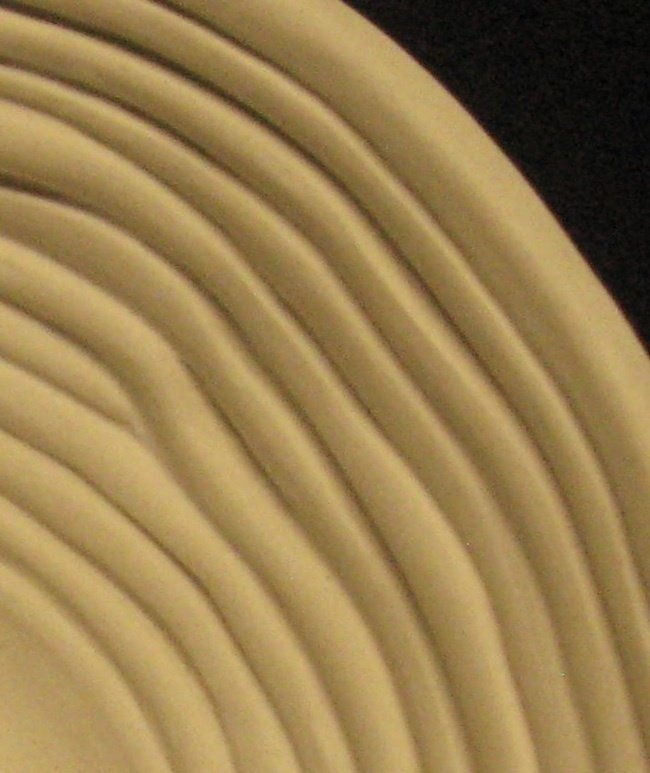
Unlike wheel thrown work, coils of clay are hand pinched together in a circular motion. By applying additional coils, pieces may grow in height, widen or close in. Once a general shape is achieved, the piece is refined by removing layers of thickness to create a final unique look. Each creation will be coated with a clay slip (terra sigillata) and burnished using a cloth, spoon or other object to achieve a soft and sensuous feel. Once fully dry, the work is then fired in an electric kiln (bisque firing) in preparation for its next pit/barrel firing.
Pit firings previously performed in dug out pits and burn barrels where local regulations permit.
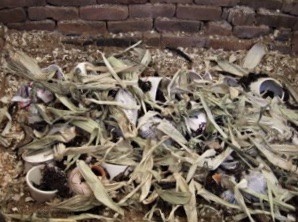
Once bisque fired, pieces were placed in a pit/hole along with layers of combustible material like seaweed, driftwood, coffee grounds, salt, grasses, hard and soft woods. This lasagna of organics was then ignited and left to burn for several hours.
Discovery!
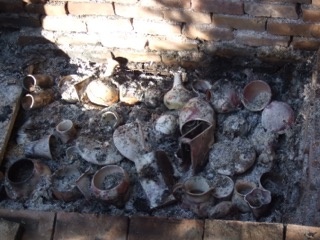
Once the pit has cooled down the work is revealed.
Alternative downdraft barrel firing where local regulations permit.
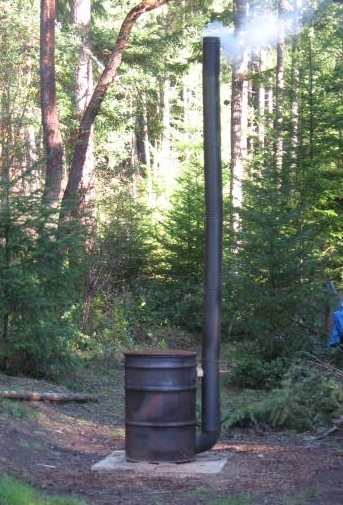 Unlike pit firing or simply burning work in a barrel, a downdraft barrel has a chimney stack that is three times its height. This type of barrel pulls oxygen into a firing chamber increasing airflow resulting in a hotter atmosphere. Bisque fired work is tumble stacked in the barrel along with combustible materials as mentioned in the pit firing process above. The barrel is then ignited and left to burn for several hours.
Unlike pit firing or simply burning work in a barrel, a downdraft barrel has a chimney stack that is three times its height. This type of barrel pulls oxygen into a firing chamber increasing airflow resulting in a hotter atmosphere. Bisque fired work is tumble stacked in the barrel along with combustible materials as mentioned in the pit firing process above. The barrel is then ignited and left to burn for several hours.
The End Result
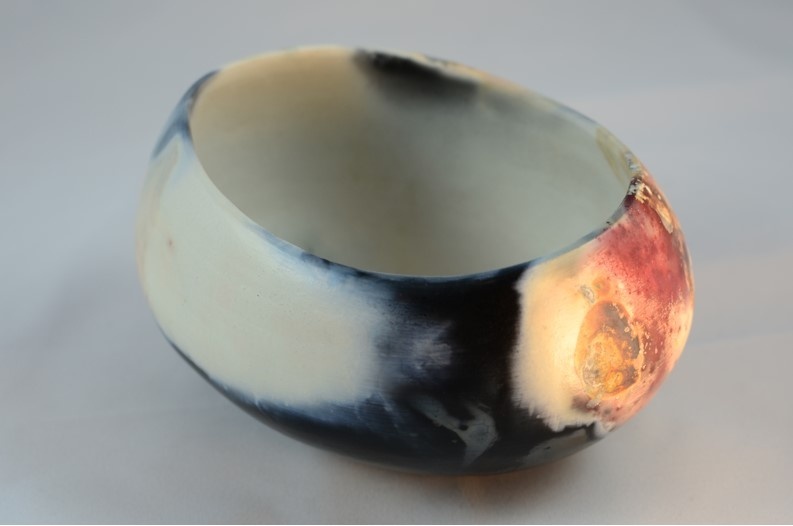
Once the pit/barrel firing is complete, the work is cleaned and given a final application of a thin sealant or bees wax and polished to accentuate the finish.
For the Table - Functional Ware
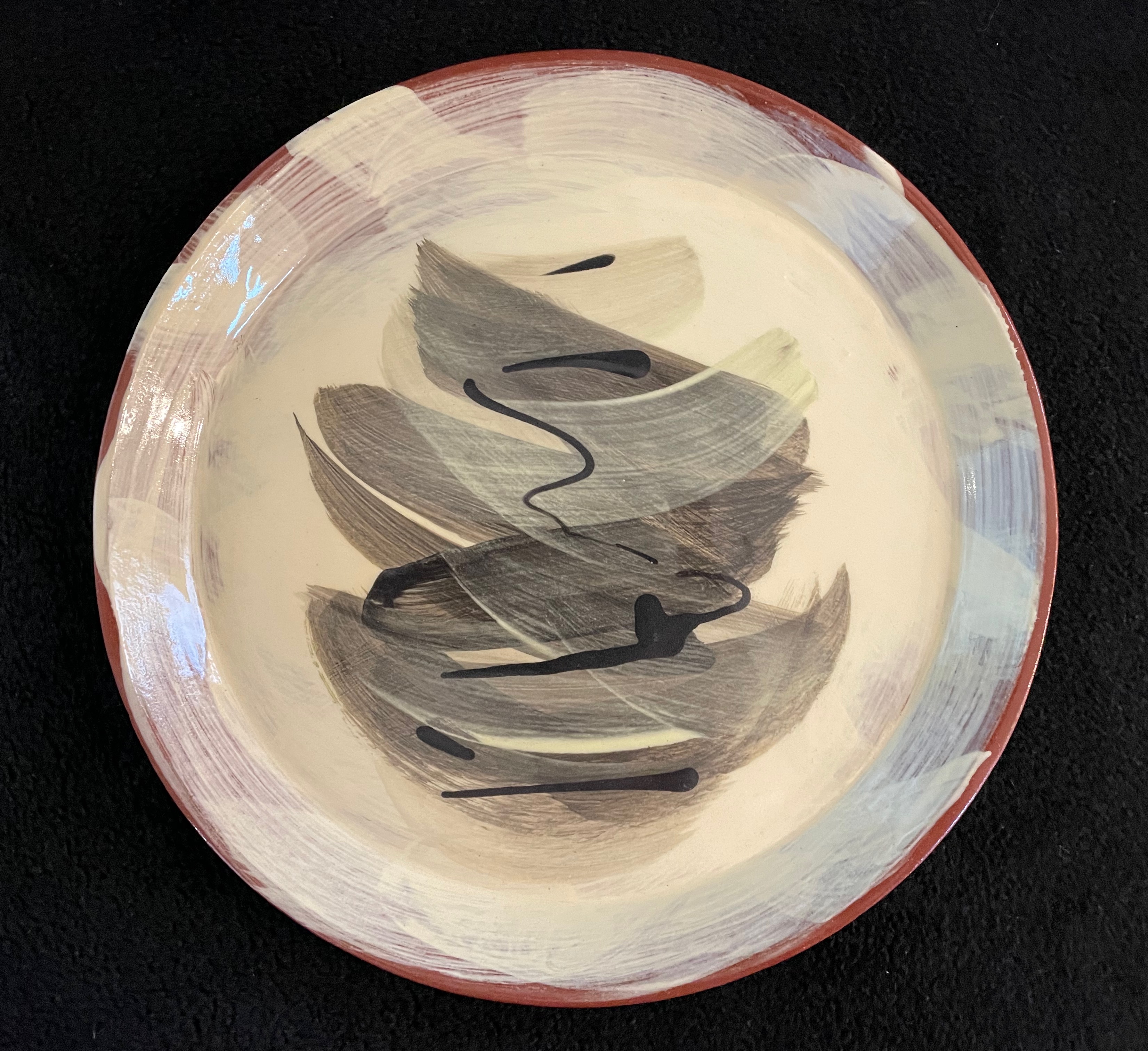
Terracotta pieces are individually painted with coloured slip, terra sigillata and or underglaze. The work undergoes two firings, an initial bisque and then a clear glaze is applied and the work is re-fired to a higher temperature. All of the functional ware is dishwasher safe.
 Click to edit
Click to edit